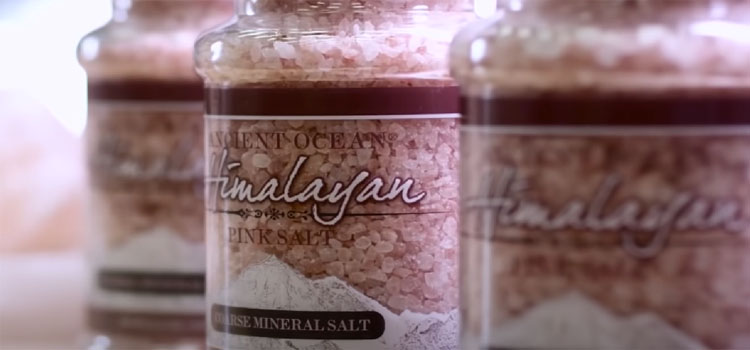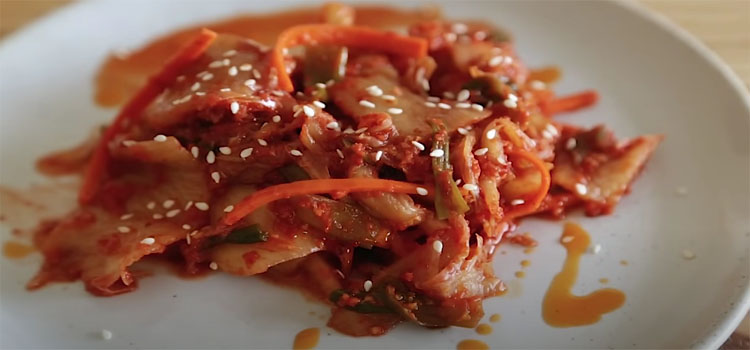Last Updated on September 15, 2024 by Shari Mason
Ever thought if **Himalayan salt** really makes your pickles tastier?
With my own trial and error and a fair bit of research, I’ll walk you through the pros and cons of using Himalayan salt for your pickling projects. Let’s plunge into this salty adventure together!
Does Himalayan Salt Work for Pickling?


Not really. We don’t recommend using Himalayan salt [1] for pickling because its mineral content could potentially affect the quality of the product.
While this unique salt boasts a distinctive mineral-rich profile, there may be better choices for pickling purposes.
Its subtle flavors could overpower the delicate balance of pickled creations, potentially altering their intended taste.
“The cure for anything is salt water: sweat, tears or the sea.”
– Karen Blixen, Danish Writer
For successful pickling, it’s best to stick with traditional pickling salts, ensuring the preservation and enhancement of the ingredients without overshadowing their natural flavors.
Also, is it okay to use Pink Himalayan salt for curing?
What Makes Himalayan Salt Unique?
- Distinct Pink Hue: One of the most noticeable features of Himalayan salt is its beautiful pink hue caused by its rich mineral content.
- Mineral-Rich Composition: Himalayan salt is abundant in trace minerals like magnesium, calcium, potassium, and iron, contributing to its unique flavor and nutritional profile.
- Natural and Unprocessed: Unlike commercial table salts, Himalayan salt is typically minimally processed and free from additives, making it a more natural and pure option.
- Subtle Flavor Enhancement: Various minerals in Himalayan salt add subtle complexity to dishes, enhancing flavors gently and distinctly.
- Versatile Use: Himalayan salt can be used in various culinary applications, from seasoning to cooking and even in decorative salt lamps.
- Health Potential: Some proponents claim potential health benefits due to its mineral content, but it’s important to note that these minerals are present in small quantities and may not significantly impact health when consumed in regular culinary use.
Read:
Can I Use Pink Himalayan Salt for Fermenting Vegetables?


Yes, you can use pink Himalayan salt for fermenting vegetables like cabbage, carrots, cucumbers, onions [2], and garlic.
The main purpose of salt in fermentation is to inhibit the growth of bad bacteria while allowing good bacteria (lactobacillus) to thrive and ferment the vegetables.
Pink Himalayan salt is a good choice as it’s unrefined and doesn’t contain additives like iodine or anti-caking agents, often found in table salt, that could potentially interfere with the fermentation process.
“Himalayan pink salt is more than just a seasoning – it’s a sprinkle of ancient earth, adding depth to your dishes and mystery to your meals.”
Eat Pallet Restaurant & Food Advice
However, there are a couple of points to consider.
First, pink Himalayan salt is more expensive than sea salt or kosher salt, which are also commonly used in fermentation.
Second, it has a slightly higher mineral content which could possibly affect the flavor of your ferment, although most people don’t find this to be an issue.
Also Read: Can You Rinse Salt Off Steak Before Cooking?
What Are Some Uses For Himalayan Salt?
- Cooking and Seasoning: Himalayan salt enhances the flavor of dishes, from simple roasted vegetables to complex sauces. It can be used as a direct substitute for table salt.
- Salt Slabs for Cooking: Thick slabs of Himalayan salt can be heated and used to cook food, which can give it a slightly salted flavor.
- Food Presentation: The striking pink hue can elevate the presentation of food, especially for dishes like sashimi or salads.
- Bath Soak: Adding Himalayan salt to a bath promotes relaxation and soothes sore muscles.
- Air Purification: Some people use Himalayan salt lamps, believing they can purify the air, though this claim lacks robust scientific evidence.
FAQs
u003cstrongu003eWhat kind of salt is best for pickling?u003c/strongu003e
The best salt for pickling is a non-iodized, pure, and additive-free pickling or canning salt. u003cbru003eu003cbru003eIts fine texture dissolves easily in brines, ensuring proper preservation and enhancing the natural flavors of the pickled ingredients.
u003cstrongu003eWhat is the difference between pickling salt and Himalayan salt?u003c/strongu003e
Pickling salt is a pure, non-iodized salt with a fine texture, ideal for dissolving evenly in pickling brines. It is free from additives, ensuring proper preservation and enhancing the natural flavors of pickled ingredients. u003cbru003eu003cbru003eOn the other hand, Himalayan salt boasts a unique pink hue due to its rich mineral content, adding a subtle complexity to dishes.
In Conclusion
While Himalayan salt offers intriguing qualities and a distinctive flavor profile, there may be better choices than using it for pickling.
Traditional pickling salts remain the preferred option for successful pickling endeavors, ensuring proper preservation and enhancing the natural taste of pickled ingredients.
While Himalayan salt can certainly enhance other culinary endeavors, relying on tried-and-true pickling salts for the best results in your pickling adventures is best.
References:
- https://www.healthline.com/nutrition/pink-himalayan-salt
- https://www.medicalnewstoday.com/articles/276714
- Can You Put an AC Unit in the Kitchen? - September 27, 2024
- What Cheese Does Olive Garden Use? Discover Their Signature - September 27, 2024
- How to Cancel a Pizza Hut Order? Quick & Easy Guide - September 24, 2024


